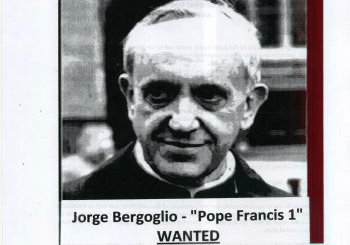Many of the People Sent There Were Healers or Medicine People Who Refused to Give Up our Traditional Ways.

Anthony Melting Tallow
D6e0tchem17b9epr fs94 at 94e:58du a9AM · Childhood and age was no protection when it came to the possibility of commitment to an insane asylum. Dr. Harry Hummer admitted a six-year-old Caddo child named Amelia Moss to the Canton Asylum for Insane Indians in June of 1922. – “I take pleasure in acknowledging receipt of your communication of May 8, 1922, advising that you are able to admit Amelia Moss, a full blood Caddo Indian child six years of age, to your institution, and that you are also ready to send your matron to this agency for the purpose of escorting this child to your institution.” – Letter, from superintendent J. A. Buntin written May 22, 1922. The Hiawatha Insane Asylum for Indians in Canton was opened in the early years of the last century. Assimilation was an objectiveList of the lost below…“Hiawatha Asylum for Insane Indians. Receiving Congressional appropriations in 1899, the Hiawatha Asylum for Insane Indians was the second federal mental hospital and the first dedicated to American Indians. The first patient arrived in 1902, and through 1934, more than 370 patients –ages two to eighty, from fifty tribes nationwide – lived here. Patients did domestic and agricultural work onsite, were occasionally shown to paying visitors, and underwent treatment with methods later deemed outdated and dehumanizing. From 1929 to 1933, federal inspectors found intolerable conditions, inadequate staffing, several sane patients kept by force, and numerous other abuses. In 1933, John Collier, the newly appointed Commissioner of Indian Affairs, ordered the asylum closed. G. J. Moen, with the Canton Chamber of Commerce, filed an injunction to keep the asylum open, but it was overturned in federal court. Many patients were discharged and those who still needed care were sent to St. Elizabeth’s Hospital, Washington, D.C. The major buildings used by the asylum have since been demolished. The Hiawatha Asylum cemetery, where at least 121 patients were buried in unmarked graves, is located between the 4th and 5th fairways of the Hiawatha Golf Club. In 1998, the cemetery was listed in the National Register of Historic Places.”Remembering the deadListed below are the Native Americans who died at the Hiawatha Asylum for Insane Indians in Canton and the dates of their deaths: Long Time Owl Woman, Aug. 25, 1908 Juanita Castildo, June 22, 1908 Mary Fairchild, April 22, 1907 Lucy Reed, April 19, 1907 Minnie LaCount, July 5, 1906 Sylvia Ridley, June 12, 1905 Edith Standing Bear, May 13, 1905 Chur Ah Tah E Kah, Jan. 2, 1905 Ollie House, July 19, 1904 Asai Tcher, Feb. 11, 1909 Alice Short, unknown Enas Pah, Sept. 30, 1909 Baby Ruth Enas Pah, Oct. 14, 1909 Agnes Sloan, Feb. 14, 1910 E We Jar, Oct. 4, 1910 Kaygwaydaseqaik, Oct. 14, 1910 Chee, May 4, 1911 Emma Gregory, March 12, 1913 Magwon, March 23, 1912 Kay Ge Gay Aush Eak, March 12, 1913 Kay Zhe Ah Bow, June 22, 1912 Blue Sky, June 20, 1914 Louise McIntosh, unknown Jane Burch, Feb. 1, 1916 Pasue, May 20, 1916 Maggie Snow, July 10, 1916 Lope Maria, Oct. 27, 1916 Lizzie Vipont, April 17, 1917 Mary Pierre, May 16, 1917 Nancy Chewie, Feb. 17, 1918 Ruth Chief On Top, May 15, 1918 Mary G. Buck, Dec. 14, 1918 Cecile Comes At Night, Aug. 12, 1919 Maud Magpie, April 24, 1920 Poke Ah Dah Ab, Dec. 26, 1920 Sits In It, Jan. 26, 1921 Josephine Wells, June 29, 1921 A.B. Blair, Aug. 6, 1921 Josephine Pajihatakana, unknown Baby Caldwell, Jan. 31, 1921 Sallie Seabolt, July 12, 1922 Selina Picon, Oct. 14, 1922 Mrs. Twoteeth, Jan. 10, 1923 Kayzo, March, 27, 1923 Josephine DeCouteau, April 9, 1923 Jessie Hallock, June 12, 1923 Marie Pancho, Oct. 17, 1923 Ebe Sirowboy, Aug. 11, 1928 Kiger, July 2, 1929 Mary Bah, Aug. 25, 1930 Cynia Houle, Jan. 19, 1932 Drag Toes, Feb. 24, 1932 Charlie Brown, unknown Jacob Hayes, Oct. 4, 1907 Toby, March 6, 1906 Trucha, Nov. 17, 1905 Hon Sah Sah Kah, Oct. 23, 1905 Big Day, July 3, 1905 Fred Takesup, Feb. 6, 1905 Peter Greenwood, Sept. 22, 1905 Robert Brings Plenty, May 20, 1903 Nadesooda, Feb. 8, 1908 Taistoto, unknown James Chief Crow, Oct. 24, 1908 Yells At Night, Nov. 21, 1908 John Woodruff, May 15, 1909 George Beutiste, May 30, 1909 Baptiste Gringas, Dec. 19, 1909 Lowe War, Dec. 24, 1909 Silas Hawk, May 12, 1910 Red Cloud, Dec. 7, 1910 Howling Wolf, March 30, 1911 Frank Starr, April 28, 1913 Antone, April 4, 1912 Arch Wolf, July 2, 1912 Joseph Taylor, Sept. 20, 1913 Amos Brown, May 1, 1921 James Crow Lightening, March 8, 1921 John Martin, April 4, 1922 Red Crow, April 8, 1922 James Blackeye, May 6, 1922 Abraham Meachem, Nov. 10, 1922 Aloysious Moore, May 12, 1923 Tom Floodwood, Sept. 29, 1923 James Black Bull, Feb. 9, 1926 Benito Juan, March 24, 1926 Seymour Wauketch, June 1, 1926 Anselmo Lucas, Dec. 19, 1926 Chico Francisco, April 21, 1927 Roy Wolfe, March 31, 1928 Matt Smith, Nov. 30, 1928 Two Teeth, July 18, 1930 Pugay Beel, Sept. 14, 1931 Herbert Conley, March 17, 1933 Jack Root, Oct. 30, 1933 Charlie Clafflin, March 2, 1914 John Hall, May 27, 1914 Amos Deer, July 13, 1914 Ne Bow O Sah, Dec. 18, 1914 Thomas Chasing Bear, Feb. 2, 1915 Dan Ach Onginiwa, March 29, 1916 Joseph Bignawe, May 20, 1916 Walkkas, Jan. 21, 1917 Steve Simons, Oct. 8, 1917 James Two Crows, Nov. 26, 1917 F.C. Eagle, Sept. 5, 1918 Andrew Dancer, Nov. 21, 1918 Apolorio Moranda, Jan. 14, 1919 Harry Miller, April 25, 1919 Herbert Iron, May 20, 1919 Fred Collins, June 4, 1919 John Coal of Fire, June 20, 1919 Joseph D. Marshall, Nov. 21, 1919 Willie George, Nov. 23, 1919 James Hathorn, Nov. 29, 1919 Ira Girsteau, March 27, 1920 Edward Hedges, May 21, 1920 Omudis, June 5, 1920 Guy Crow Neck, July 29, 1920 John Big, Aug. 25, 1920 A. Kennedy, Feb. 19, 1921 Source: U.S. Department of Interior, National Parks Service, National Register of Historic Places, Canton Asylum Cemetery
















